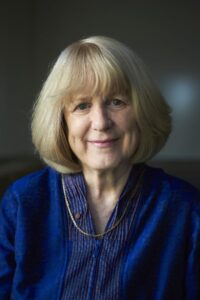
It’s Breast Cancer Awareness Month, and we can’t think of a better way to celebrate than to honor the passionate scientist who has perhaps single-handedly done more to advance breast cancer research than anyone else alive: Mary-Claire King, discoverer of the BRCA1 and BRCA2 genes. In recognition of her lifelong contributions, King was just awarded the prestigious William Allen Award, the top prize presented annually by the American Society of Human Genetics to recognize substantial and far-reaching scientific contributions to human genetics, carried out over a sustained period of scientific inquiry and productivity.
In a recent publication in the Journal of Medical Genetics, King and her collaborators at the University of Washington combined CRISPR-Cas9 targeting with HiFi sequencing to reveal novel and biologically relevant mutations in the BRCA1 gene.
The effort was driven by a need to better characterize the well-known BRCA1 and BRCA2 genes in families with hereditary breast cancer. Short-read sequencing “is of limited use for identifying complex insertions and deletions and other structural rearrangements,” the scientists note. “The BRCA1 genomic region is particularly challenging for short-read sequencing. It is composed of 42% Alu repeats, the second highest proportion in the genome, and a 30 kb tandem segmental duplication spanning its promoter and first two exons.” To expand the clinical utility of information about these genes in the future, much research remains to be done to characterize the many variants missed by short reads.
For this study, scientists aimed to sequence the BRCA1 and BRCA2 genes from individuals representing 19 families with a history of early-onset breast cancer. All of these individuals had previously had these genes analyzed with gene panels and whole exome sequencing, but no pathogenic mutations were found that explained the early onset breast cancer susceptibility.
To target the two genes of interest, the team used the HLS-CATCH CRISPR-based targeting method from Sage Science, extracting 200 kb of high molecular weight libraries ideal for use with PacBio sequencing. HiFi sequencing was performed on the Sequel System, with average genomic fragment length of about 10,000 bases to fully cover the two BRCA loci, including non-coding elements.
In one case, this approach unlocked a novel variant to explain the family’s history of cancer. “We identified an intronic SINE-VNTR-Alu retrotransposon insertion that led to the creation of a pseudoexon in the BRCA1 message and introduced a premature truncation,” the scientists report. The retrotransposon was nearly 3 kb long. “Multiple long reads included all elements of the mutation and of wild-type flanking BRCA1 intronic sequence, so that the mutation’s position and the sequence were clear,” the authors note, adding that the variant segregated with breast cancer throughout the family. After identifying this tough-to-find type of variant, the authors confirmed that the intronic repeat element can affect the final BRCA1 message by sequencing cDNAs from matching patient cells.
Based on these findings, the team suggests that there may be many other pathogenic complex structural variants. “It is possible, even likely, that complex mutations are common at tumour suppressor genes,” they write. “We suggest that complex mutations have thus far been rarely encountered, because they are difficult to detect with existing approaches.”
King and her collaborators believe the approach they used will be important for continuing to uncover these variants. “The genomic approach described here, integrating CRISPR–Cas9 excision of critical loci with long-read sequencing, yields complete sequence of targeted loci and thus can detect all classes of complex non-coding structural variants,” they report. “This combination of CRISPR–Cas9 excision and long-read sequencing reveals a class of complex, damaging and otherwise cryptic mutations that may be particularly frequent in r suppressor genes replete with intronic repeats.”
Listen to King share the emotional and humorous story of the events leading to the funding of the project that resulted in the discovery of the BRCA1 gene – a true testament to her persistence and the constant challenge of balancing career and family, with a cameo from Joe DiMaggio!
October 29, 2020 | Human genetics research